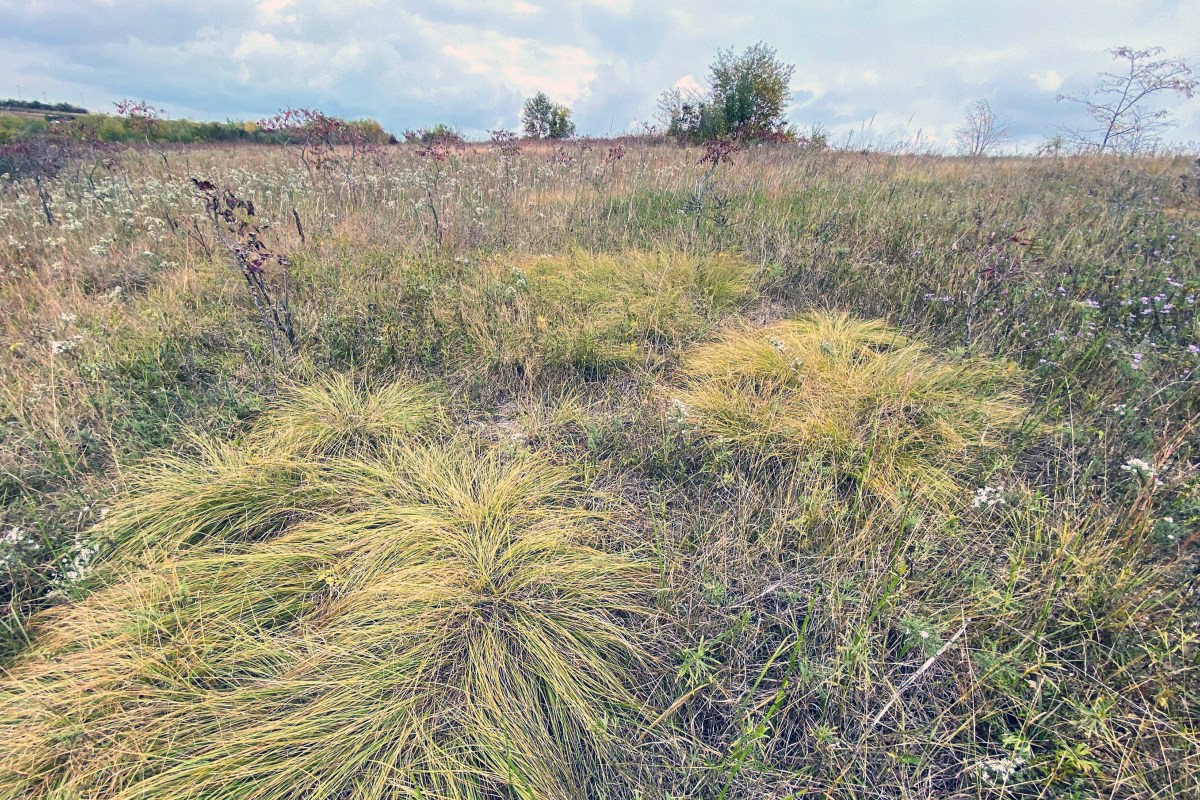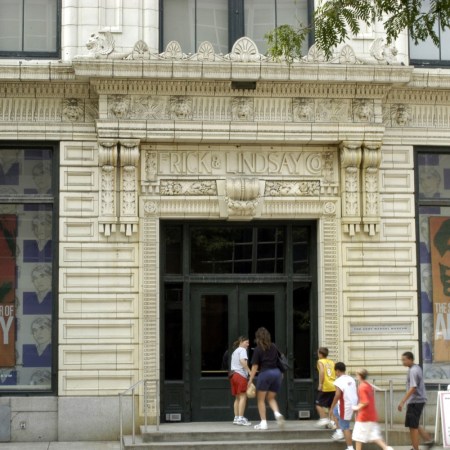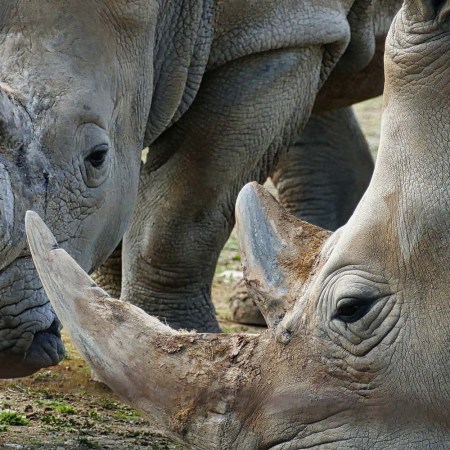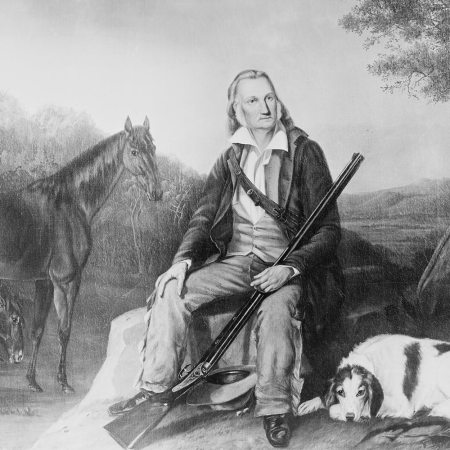How much does the Prairie State care for its ancient prairieland?
These days, environmental issues typically register on the global level, but an ongoing dust-up in northwest Illinois puts one in mind of the 1970s, when the issues seemed more regional and legislation supporting Mother Nature was being stamped into law at an impressive clip: the establishment of the Natural Resource Defense Council and the EPA, the passing of the Endangered Species Act … the list goes on.
Back in August, the Chicago Rockford International Airport (RFD) moved ahead with plans to expand its cargo capacity, which included laying out a new road on a parcel of its site known as the Bell Bowl Prairie, one of the few remaining dry gravel prairies in the Prairie State. The Natural Land Institute (NLI) filed a lawsuit to temporarily halt construction, generating a confrontation that reminds one that not every environmental issue plays out on the world stage and that, like politics, ecology is local.
“Back in 1997, our founder, George Fell, saved the prairie, and made an agreement to manage it, which we’ve been doing all these years with no charge to the airport,” says NLI executive director, Kerry Leigh. (The Greater Rockford Airport Authority disputes this.) “In 1994, expansion plans were drawn up, but they were drawn to avoid the prairie. So the whole environmental community was blindsided by this.”
Dry gravel prairies rest on a substrate of broken stone deposited when glaciers retreated thousands of years ago. There were once hundreds of acres of such land in the state. Today, 80 acres remain, just over 20 of which comprise the Bell Bowl Prairie. The five acres which are under immediate threat are high quality, free of invasive species and little altered by human activity. In a few square feet, botanists can identify a unique partnership of dozens of plants.
“This just doesn’t exist anywhere else and you can’t recreate it,” says Jennifer Kuroda of the The Sinnissippi Chapter of the National Audubon Society, which has been instrumental in sounding the alert. “You can’t take these plants and move them somewhere else and expect them to do what they’re doing at the prairie.”
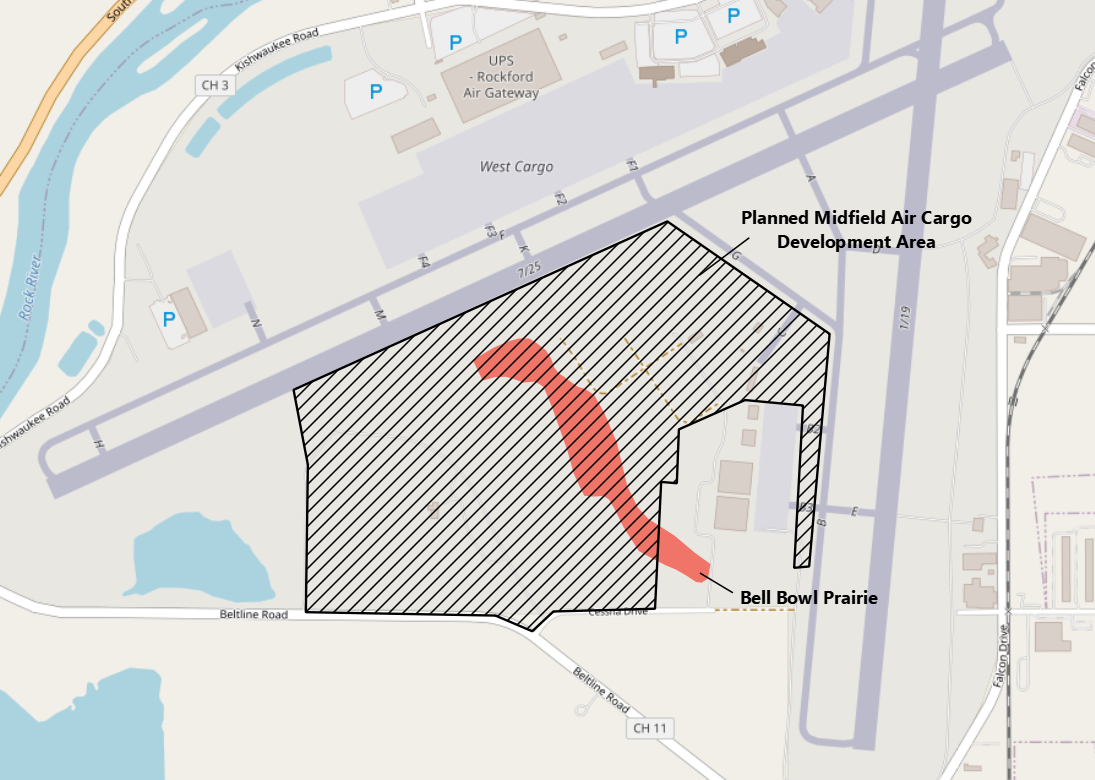
The environmental conservancy movement has long been dismissed by some as a cult overly worried about bugs and bark, and critics of the Bell Bowl champions could easily make fun of their concern for the fate of the Carolina Anemone and the Pasque Flower or the rusty patch bumblebee. But as the NLI’s Leigh points out, a macro view is in order. “We have to think about pollinators and our food supply; we have to think about our drinking water. Gravel prairies are incredible groundwater recharge areas that filter and clean our drinking water. So we are literally going to put our drinking water in great peril, our food systems in great peril.”
Although recent wildfires and flooding have made some folks sit up and take notice, quantifying the true damage of ecological mismanagement isn’t always easy, at least not in a form the general public can readily appreciate. And as with the burning of fossil fuels, the Bell Bowl contest is inseparable from economics (airport operations reportedly created 1000 new jobs in the past 18 months). In a world in which we think nothing of grabbing a bottle of water every time we hit a quickie mart (plastic!) and couldn’t live without the convenience of Amazon (all those boxes!), it’s an uphill climb to get everyday citizens to take a good hard look at what’s happening in their own backyards. So much easier to hail Greta Thunberg than contemplate our own carbon footprints.
The NLI lawsuit won’t be heard in court until February. “We are not trying to stop the airport expansion,” asserts Leigh. “We think the economic vitality of the region is dependent on that. But in 2021, there are so many amazing green infrastructure designs, so many ways to avoid damaging the prairie. We can find a way to have both.” Until then? “Sometimes, we just have to live with uncertainly.”
This article was featured in the InsideHook Chicago newsletter. Sign up now for more from the Windy City.
